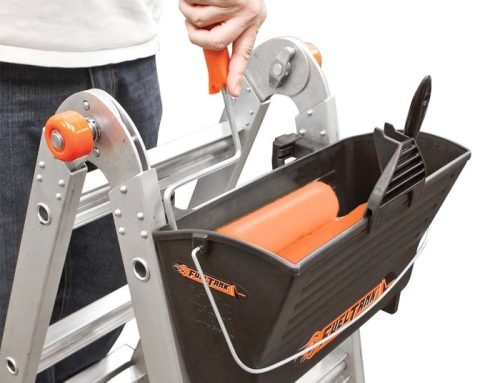Mount Everest is one of the most desirable climbs for any mountaineer and the peak is classed as "the roof of the world", along with other high peaks in the interior Asian mountain ranges. The last stage of the climb is known as the Hillary Step, after Sir Edmund Hillary, the man who first navigated the vertical face to reach the peak on 29th May, 1953, almost exactly sixty years ago. Nowadays, hundreds of people a year undertake and achieve the impressive feat, but the sheer numbers of people involved (not to mention that each climber or team is accompanied by a Sherpa, trained and experienced in that particular mountain) mean there is now a traffic jam around the Hillary Step. Already in 2013, more than 520 people have reached the summit, and given the short climbing windows available due to weather conditions, that's more than 100 people a month! The step itself is a sheer vertical face, which can only be tackled by one person at a time. That is, only one person going either up or down. This means that there are often situations where people are waiting up to three hours for their turn, and this prolonged exposure to the cold, the altitude and the location is a major risk factor.
Are Ladders The Way Forward?
Dawa Steven Sherpa, a senior member of the Expedition Operators Association in Nepal and one of the commercial operators on Everest, has floated the idea of installing a ladder on the Hillary Step in order to ease congestion. Of course, the plans are controversial, as it is seen as cheating, taking away the purism of the climb, which was only first achieved sixty years ago. However, some of the world's mountaineering experts are supporting of the plans. Frits Vrijlandt is the president of the International Mountaineering and Climbing Federation and he believes the idea of ladders to aid the backlog of people is a good one. The ladder is only intended to help with the descent, so it will not actually affect the purity of the ascent, unless climbers opt to use the ladder rather than manage the climb by themselves. Sherpas and other Nepalese citizens especially, would like to see the ladder plan go ahead, as it makes the task of climbing Everest (and getting back down) a lot safer. However, climbing purists are against the idea and resistant to this and other plans to make the challenge easier and safer. They feel that the highest summit in the world should be the preserve of the experienced and capable mountaineer. It is interesting to note that Hillary and his Sherpa, Tenzing Norgay, actually did use a ladder in their expedition, a sectional ladder made by British manufacturer Lyte Ladders. Although they didn't use it for climbing, they did use the lightweight aluminium ladder to bridge crevasses, so perhaps the idea of installing a ladder near the summit pays some homage to the man who first scaled the mountain? Assuming the plan goes ahead, the question of what sort of ladder to use is a good one. It will need to be fixed solidly into the rock, and somehow it will need to be carried up the mountain (at least part of the way, if it is dropped by helicopter halfway up). Finding the right people to install the ladder will also be tricky: how many builders do you know that are also internationally renowned mountaineers, able to undertake complex work at height? Given the options available, it seems like a cat ladder might be the best solution. Of course, this is not easier to get up the mountain than any other, but it does provide a supporting cage, which may make the climbers feel more at ease. The cage could be used to attach lines to, ensuring no-one falls down the ladder. Cat ladders are also manufactured for roof access, so it makes sense to use an access method that is designed for frequent outdoor use. Of course, they could dispense with the traditional notion of a ladder altogether and fix a series of hand-holds into the rock. This approach might appease the purists a little more, as they would be less intrusive and still a challenge to climb, being closer to the traditional notions of rock climbing. Either way, the fact that there might be a ladder up Everest doesn't make the entire feat much easier in the eyes of most.






Leave A Comment
You must be logged in to post a comment.